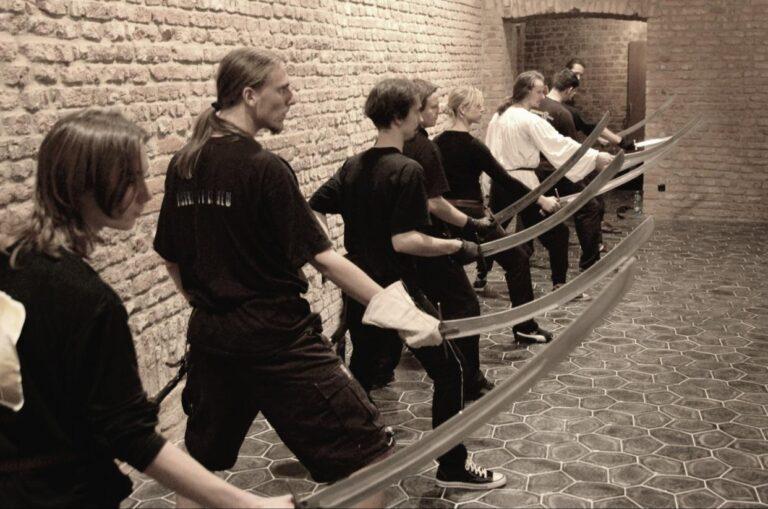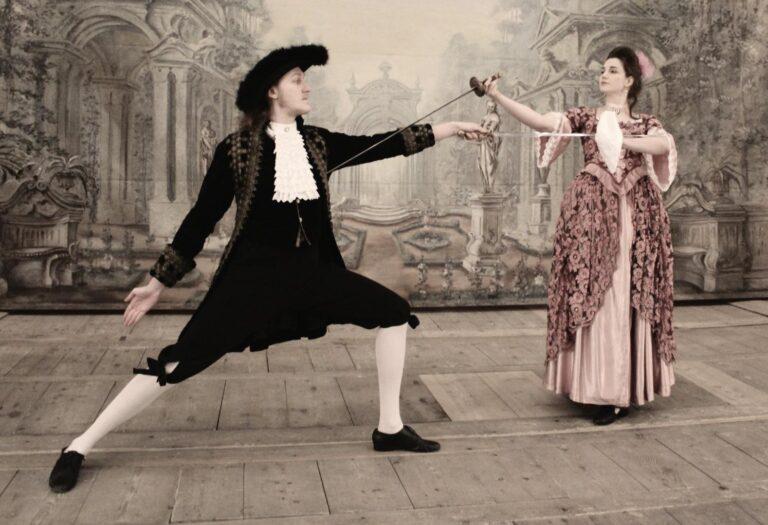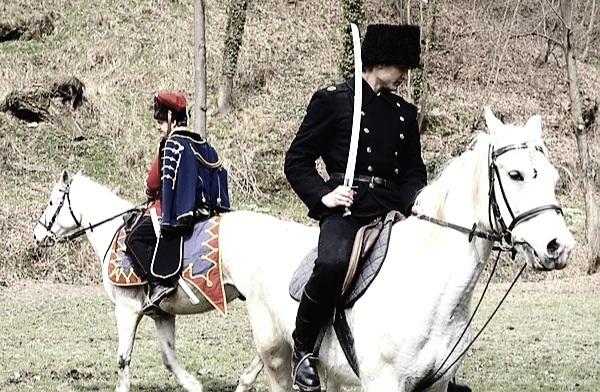Basics of fencing
Approximately six months of general training will allow you to decide which studio you want to continue in. It includes the basics of fighting with individual weapons and a short introduction to different schools of fencing.

Approximately six months of general training will allow you to decide which studio you want to continue in. It includes the basics of fighting with individual weapons and a short introduction to different schools of fencing.

The school of longsword fighting, which reached its classical form in 14. and 15th century. The characteristics of German fencing stem from the two-handed grip of the weapon, the focus on the section and point, and the movement in space.

European or Oriental sabre fighting school. Characteristic is the emphasis on slashing, movement in space, various forms of drawing, sheathed techniques and the use of blade curvature to recover the attack after cover.

The school of fighting with a cord, or rather with a fleret. The characteristic movement is linear, the attack is only stabbing, the basic retaliation is a riposte, i.e. cover and counterattack made during the opponent’s attack.
The French school is characterised by a movement aesthetic best expressed in fencing salutes.

School of fighting with bell rapier with extended crossbar and combination rapier/lever, rapier/cloak. Characteristic is high alertness, movement in a circle, dexterous dance steps, vertical posture and work with the rapier bar.

School of fighting with rapier or rapier/left hand, rapier/dagger and rapier/cloak combinations. It is characterized by a preference for the point over the chop, strong full body work, deep lunges and retaliations in stesso tempo, i.e. simultaneously with the opponent’s attack.

The studio perfects contemporary forms and finds new means of expression for spectacular, credible, artistically valuable and above all safe staging of fencing performances. It brings together interested actors, dancers, historical fencers and stuntmen. During regular training they improve their fencing and fighting skills, designed for the eye of the beholder.

Archery teaches coordination of movement, concentration, balance and patience. These qualities are undoubtedly among the most important, not only in terms of the art of chivalry and the definition of “chivalry”. It is therefore an essential part of the training of AKA students.

The knight’s most prized possession was a horse. He carried it into battles and wars as well as in tournaments and competitions. Our future riders and horses are trained against distractions such as fire, gunfire, smoke and complicated obstacles. Our knight hits a quintana with a clog, releases an arrow from his bow while riding, and controls a predator on the hunt from the saddle. Ladies participate in equestrian activities in style, in a ladies’ saddle.

Young men and women from the age of 10 years undergo a compulsory warm-up and begin to practice techniques of fighting with historical weapons. They learn to control not only movement techniques, but their own emotions; to understand the behaviour of the opponent and predict their reactions; to work with their fear; to lead others, but also to submit to the interest of the whole team. The amount and difficulty of the work varies according to the student’s level and ambition.